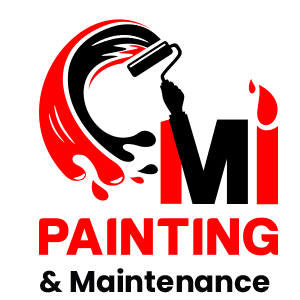Cleaning the area as soon as you notice the damage produces the best results and reduces the likelihood of needing paint touch-ups. Begin by removing the stain with the gentlest method possible and gradually work your way up until the scuff mark is gone. Water or a melamine sponge should do the trick without harming the paint, but your cleaning project may necessitate more aggressive methods. In this blog, you will learn how to clean walls to remove scuffs and stains properly.
What causes scuffs and stains on walls?
If you want to keep your walls clean and free of scuffs and stains, then it’s important that you know what causes them.
There are four main culprits: paint, sweat, oils from skin or food, and dust. Painting a wall is the only one that requires any effort on your part; all three other sources can be fought with simple household products like vinegar for grease-related problems or alcohol for paint spills.
However, there is no single recipe for success against these attacks because each one has its own unique requirements.
What to Do
Wet a soft cloth and thoroughly wring it out. Buff the scuff mark lightly with the dampened cloth, increasing the pressure as you go. Keep your brush directly over the scuff mark, avoiding the surrounding area. Wipe the wall with a soft, dry cloth if the scuff mark has vanished. If it doesn’t, switch to a different cleaning method.
Wring out a melamine cleaning sponge after it has been dampened. Scrub in circles, up and down, and left to right, at the scuff mark. Continue with a more aggressive cleaning method if the scuff mark is still visible.
Fill a medium-size bowl halfway with warm water and a few drops of liquid dish detergent. Using a clean rag, soak it in the solution and wring it out before scrubbing the scuff mark away. Don’t use too much paint on the wall. Place a drop of liquid dish detergent directly on the rag and scrub again if you’re making progress with the scuff mark but need a little more strength.
Use an all-purpose household cleaner to remove stubborn scuff marks. Scrub the mark with a rag soaked in the cleaner. If that doesn’t work, directly spritz the wall and scrub it again. Make a paste with baking soda and water as an alternative. Scrub the mark with a small amount of the paste on the end of a clean cloth.
Using a damp rag, wipe down the cleaned area. Using a clean cloth, wipe the wall dry.
Scuff Marks
With your hand, feel the wall where the mark is. If it’s indented or noticeably rougher than the wall around it, use fine-grit sandpaper to lightly sand the area. Feel it again after two passes. Repeat until the area is completely smooth. Don’t try to get rid of the finish. Concentrate your efforts on the damaged area and stay away from the surrounding wall. Using a damp cloth, wipe away the dust.
Pour some touch-up paint into a small plastic dish after thoroughly mixing a can of touch-up paint. If you don’t have touch-up paint, bring a paint chip from the wall (at least the size of a quarter) to a paint specialist for a custom match. Make no attempt to match the color solely on the basis of the name.
Use a paint reducer to dilute the oil-based touch-up paint according to the manufacturer’s instructions. This helps the patch blend in with the surrounding area by slowing down the drying time of the paint. Instead of using a paint reducer, dilute latex paint with water.
Dip a paintbrush’s end into the paint. Using a paper towel, wipe away any excess paint. Stipple the paint onto the wall in a thin, even coat, staying directly over the damage. Allow for complete drying of the paint.
If you need a professional to do it, MI Painting can do the job for you. Just visit their website here.
